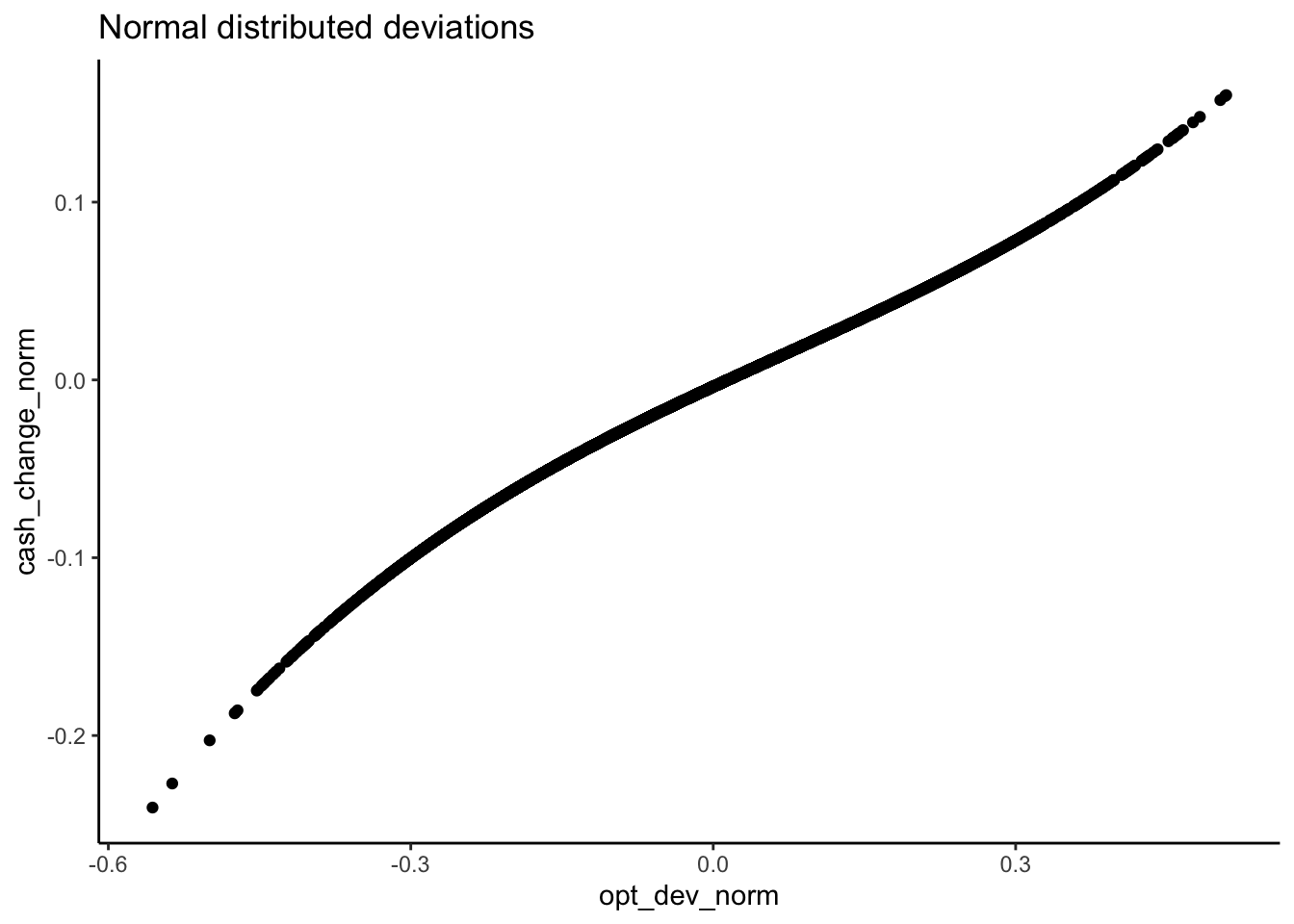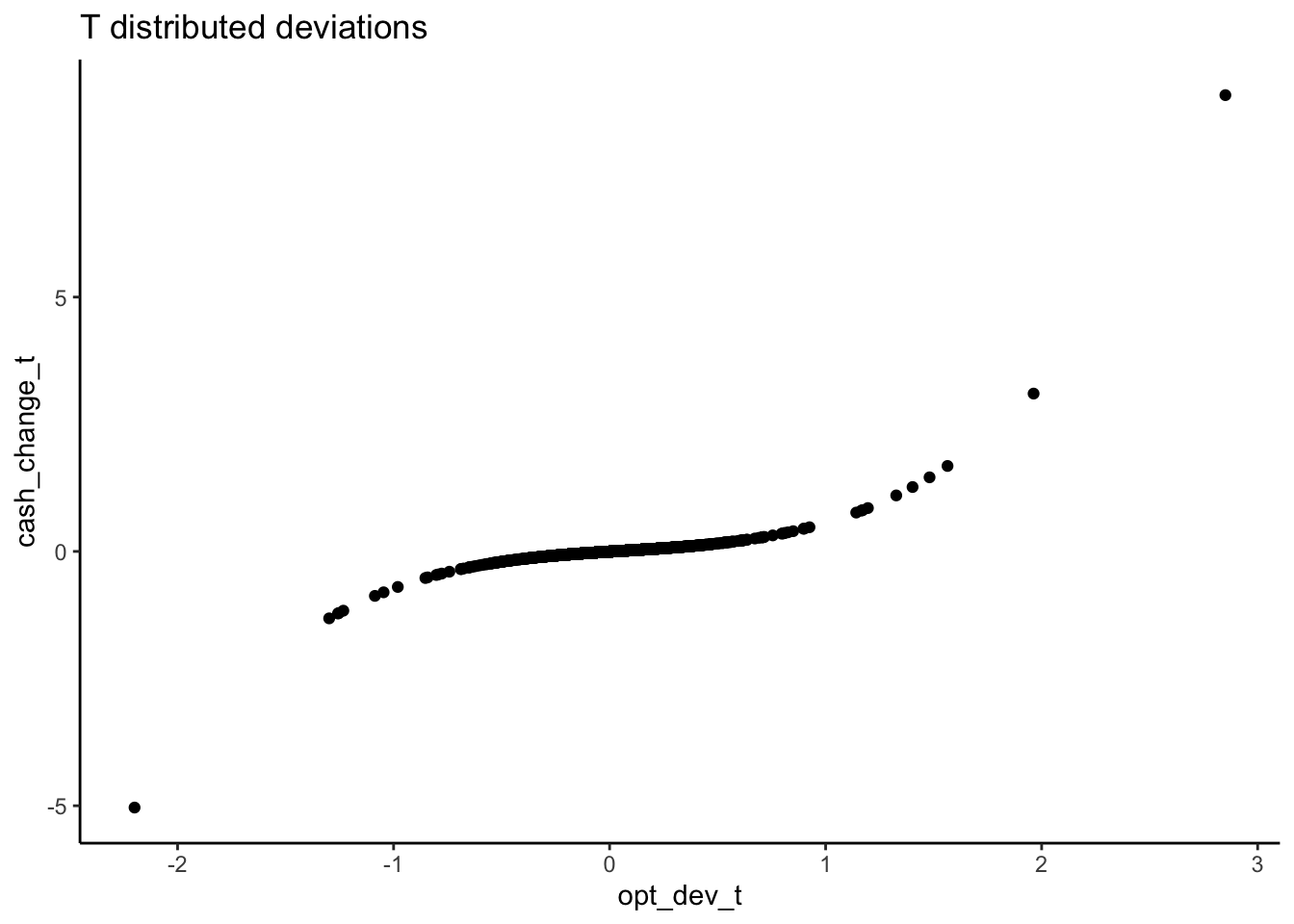Quadratic and Cubic Terms in Linear Models.
In our weekly seminar, Robert Faff presented a paper with an OLS model with
the quadratic and cubic term effects. The dependent variable in this model
is the change in cash holdings (
The relevant part of the OLS model is
The results show that
You can see that the speed of adjustment depends on three coefficients and the
value of R.
First of all, I have to make a couple of assumptions because I don’t have the
full data. From the descriptive statistics, we know the meand (mopt) and
(sdopt) for opt_dev_norm) and a
t-distribution with 3 degrees of freedom (opt_dev_t). The latter will give
us larger outliers. Than we just calculate the cash holding change based on
the ’s above and the OLS specification. Finally, you can plot the relation
between change in cash holding and the deviation from the optimal level.
What struck me was that the three regimes are much more clear with the t-distribution than with the normal distribution for the deviations. In other words, it looks like the extreme cases are doing a lot of work to identify the regimes.
require(ggplot2)## Loading required package: ggplot2mopt = -0.0026
sdopt = 0.1488
opt_dev_norm = rnorm(1e4, mopt, sdopt)
opt_dev_t = rt(1e4, df = 3) * sqrt(sdopt^2/3) + mopt
round(quantile(opt_dev_norm, probs = c(0.75, 0.5, 0.25)), 2)## 75% 50% 25%
## 0.1 0.0 -0.1round(quantile(opt_dev_t, probs = c(0.75, 0.5, 0.25)), 2)## 75% 50% 25%
## 0.06 0.00 -0.07cash_change_norm = -0.0038 + 0.2633 * opt_dev_norm - 0.0790 * opt_dev_norm ^ 2 +
0.3827 * opt_dev_norm ^ 3
normplot = qplot(x = opt_dev_norm, y = cash_change_norm) +
ggtitle("Normal distributed deviations") +
theme_classic()
cash_change_t = -0.0038 + 0.2633 * opt_dev_t - 0.0790 * opt_dev_t ^ 2 +
0.3827 * opt_dev_t ^ 3
tplot = qplot(x = opt_dev_t, y = cash_change_t) +
ggtitle("T distributed deviations") +
theme_classic()
print(normplot)
print(tplot)